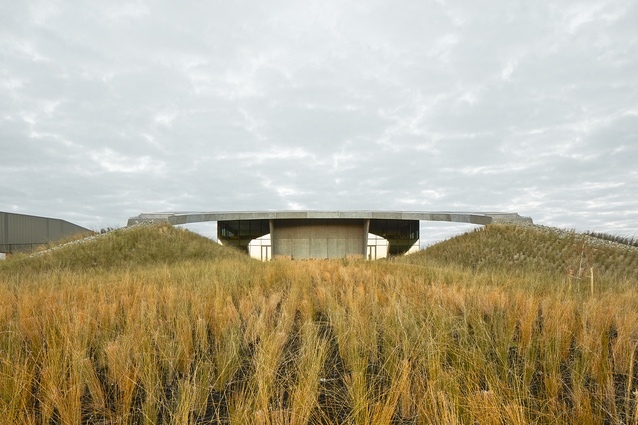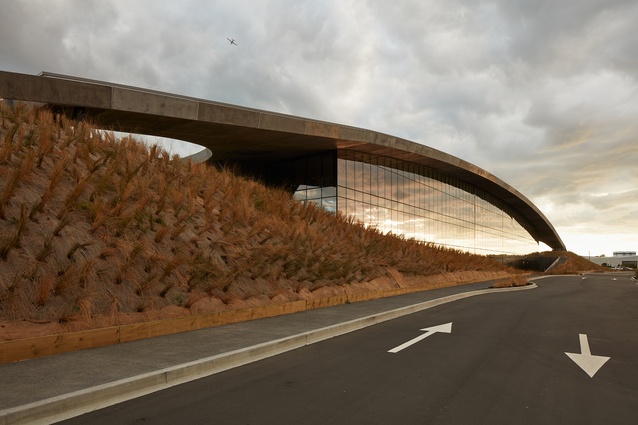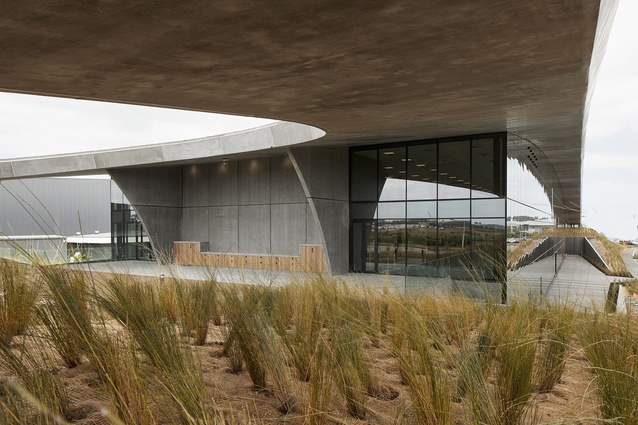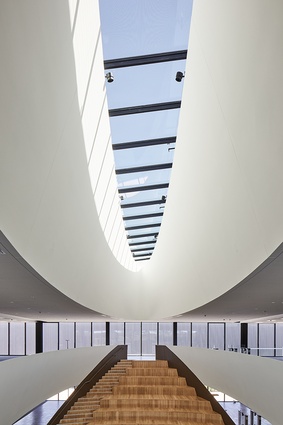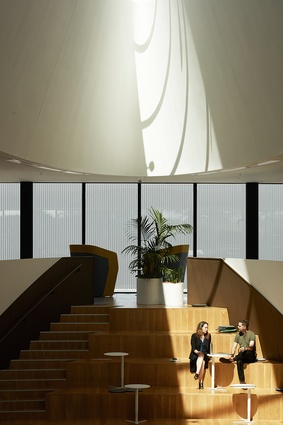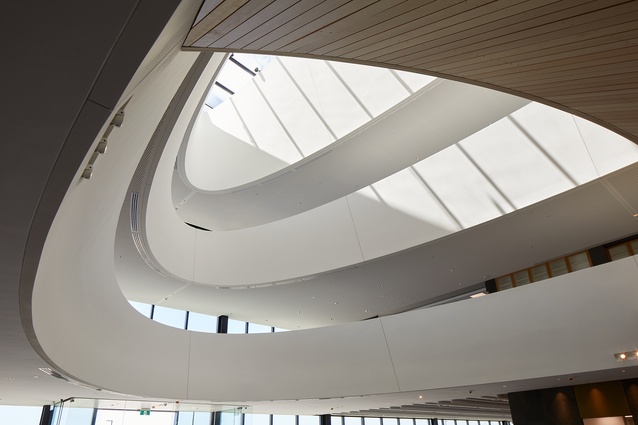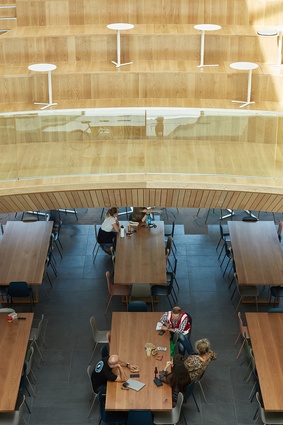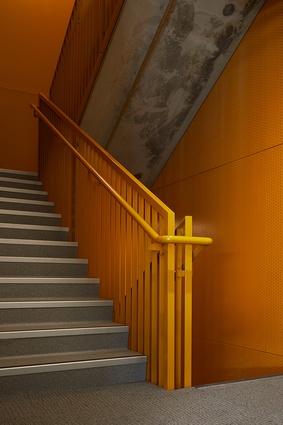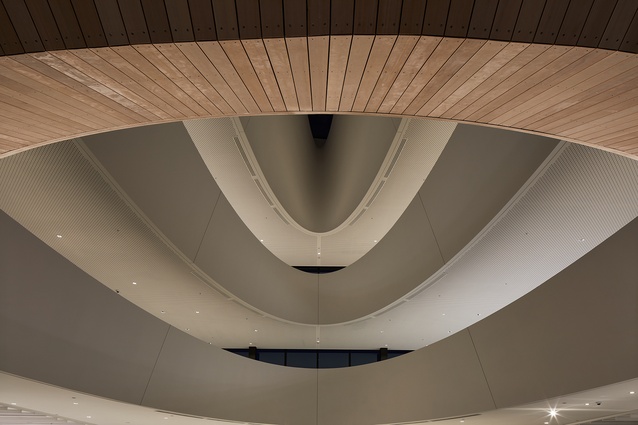Volcanic dome
Bill McKay is transported to ancient Rome as he explores the curvilinear market place of Foodstuffs’ North Island HQ by Monk Mackenzie.
Airports really are awful, aren’t they? The architecture is often a few flaccid curves here and there while aircraft are carefully concealed: no excitement of flight allowed. Emotional departures are constrained to awkward conversation in a food court until someone looks at the time – gotta go. Then, awkward hugs, the queue through security and the trek through duty-free, followed by that limbo wait at the gate before we are all crammed into a metal can.
All the world’s drama is homogenised; airports are supermarkets of the sky, except you have to pay for parking. Arrival is no different: in Aotearoa, some canned kōkako calls and pics of our fake 100 per cent clean and green country, then out into chaos that characterises almost all airports everywhere. What could be worse than being at an airport? Probably working there or in the vast, drab surroundings.
This brings us to Foodstuffs’ new North Island HQ. Sounds equally exciting, doesn’t it?
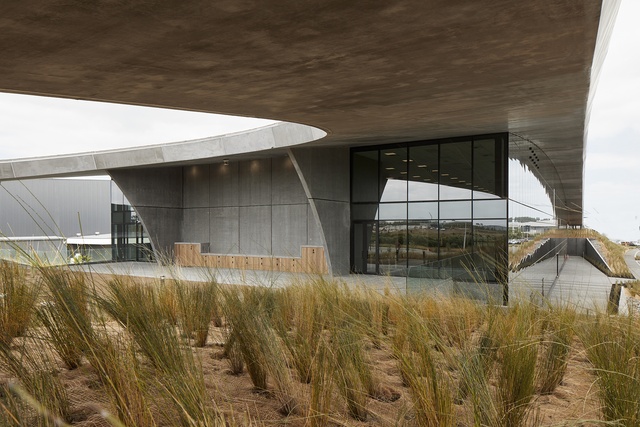
Auckland International Airport’s hinterlands are no different from most: traffic, car parks, freight-handling facilities and distribution hubs. Most of the buildings here are big tin sheds smeared with corporate colours; maybe there’s a bit of soaring-looking architectural styling tacked on the front of the usual dreary workplace. This one is different and a fabulous example of how industrial areas don’t have to be ordinary; Foodstuffs’ North Island headquarters and distribution centre is reputably one of the biggest new complexes in the country.
Eclipse Architecture designed the gigantic distribution shed but Monk Mackenzie won the pitch for the building in front, as well as the conceptual layout of the complex. I couldn’t believe that the renders I saw on its website could actually be for a supermarket chain’s offices at Auckland Airport. Indeed, rumour has it that the project manager advised them to tone down the futuristic atmospherics of them – but the finished result is pretty close and, hopefully, the shape of things to come in this area.
To get there, by car, of course, you exit the motorway’s torrent of traffic on the corner with RTA and Eclipse’s tilted, strata-like Hellmann HQ, then cruise through The Landing, a new precinct but the usual confusing, meandering crescents of roadway. You will pull up, however, when you see the rather startling sight of a huge concrete arch of roof emerging from earthern slopes of native grasses.
Monk Mackenzie’s big move was to align the buildings of this complex along one axis, roughly north-south, on a little peninsula amid the estuaries here. The sharp-eyed will see, beyond the car park and across the creek, the ancient Ōtuataua Stonefields and the contentious whenua of Ihumātao on the edge of the Manukau Harbour. Sure, the car park is vast but thousands work here where there is no meaningful public transport to the area for travellers or workers.
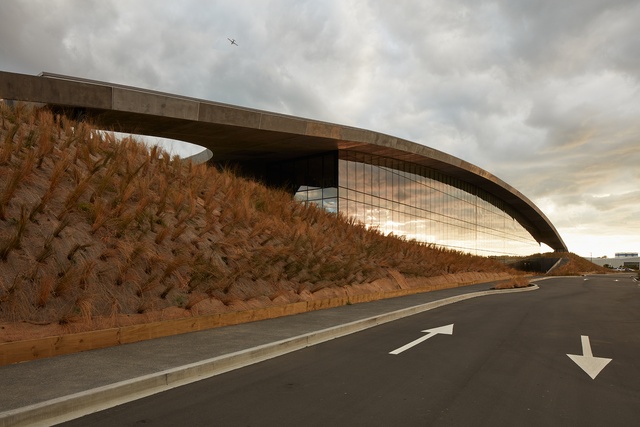
Like RTA and Eclipse Architecture’s folded, ramped and wrapped Hellmann facility, Foodstuffs’ HQ reflects the geological tectonics of the area. But, whereas Hellmann’s dynamic twists and turns respond to the busy corner it is on, this building, at the edge of the peninsula, is simpler. Elsewhere, the odour of av-gas, the thunder of jets and acres of asphalt have supplanted the intricately laced landscape of mudflats and estuaries but, here, the huge simplicity of concept and form responds to the vastness of harbour and sky, amid the undulating volcanic landscape of Tāmaki Makaurau.
Like a volcanic dome swelling out of the earth, the building has a welcome, grounded and calming quality about it. I know the budget and it was not all that expensive; it was possible to utilise surplus earth from stockpiles everywhere around the airport where the huge footprints of most facilities mean flattened sites become the default for development.
The entrance is a bit blank – you know what it’s like, walking towards a big, glassy frontage and wondering if you will be that idiot everyone stares at, rattling the door of the corporate behemoth, trying to get in. But, inside, it’s much more market place than corporate office. Everyone is welcome to come in this way and they do; the workers are not sent around the back. It’s a mix of office staff, warehouse workers and a lot of visitors. The building is laid out very simply and sensibly for a place where many, such as remote workers, Foodstuffs suppliers or supermarket staff on a day’s training, are drifting in and out.
An elliptical skylight at the apex of the vault not only admits daylight; the gradual shift of sunlight and shadow has a sundial quality that, dare I say, reminded me of Rome’s Pantheon. However, I would hesitate to further that simile – pagan cathedral of capitalism in our capital of consumer culture? But there is also an elevated theatrette poised under the light-from-above halo of the skylight that had me thinking about that other famous Roman curvilinear monolith, the Colosseum. It recalled from films that elevated terrace where the evil emperor sits above gladiatorial carnage or from where he addresses the troops.
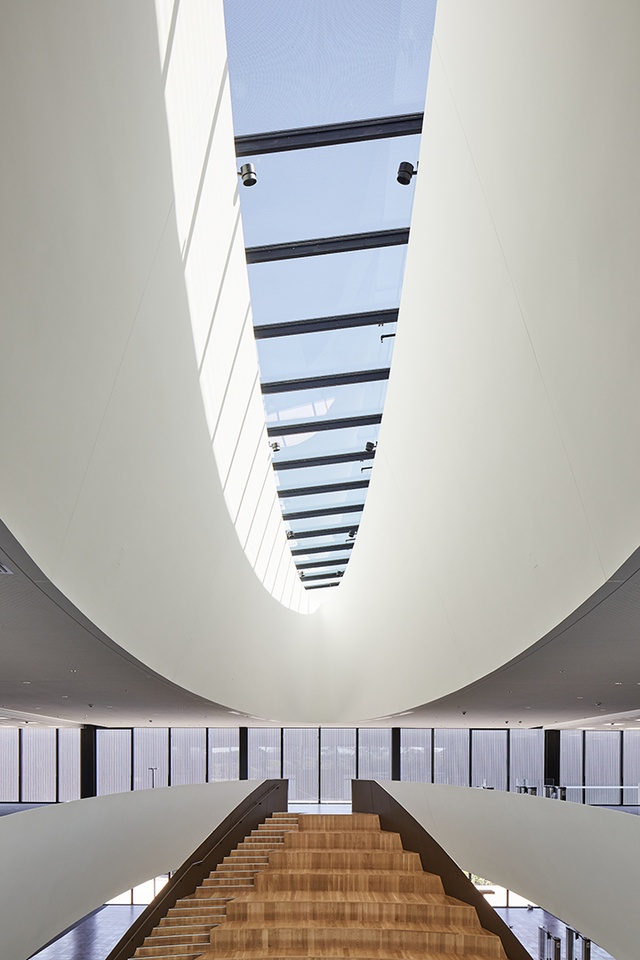
But there is no arena here; it is a modern-day forum with a café and a micro-supermarket to your left and, at the centre, rafts of couches and tables where meals and meetings can happen. As you would expect of a supermarket chain’s HQ, there is a constant to and fro of would-be suppliers pitching products, bringing stuff in and out of the anthill.
This village atmosphere is also very suitable for what is, actually, a New Zealand-owned cooperative. And there is no evil emperor here either; there aren’t too many, if any, very big corporate workplaces in the country where you bump into the boss in shirtsleeves talking to a colleague at a table while a couple of warehouse guys in high-vis are catching a few quick zzz’s on a couch nearby. Yes, we are all one team, those of us who work in big organisations often hear, but this building is physical evidence of walking that kind of talk.
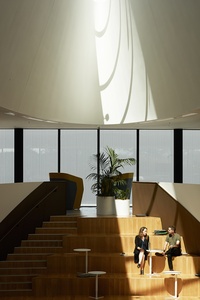
The ground floor’s right wing is a series of meeting spaces, with sliding folding walls that allow a variety of configurations. It’s a three-storey building at its apex and upstairs is pretty much open plan as well, although more secure than the ground floor, with a variety of workspaces. The great thing on the upper levels is that the first floor opens out at both ends onto the grassed berms with sunny outdoor barbecue and social spaces, under the vast barrel vault of the roof swooping down low to shelter them.
For a big building, it is a very easy place to navigate, always giving you a sense of where you are in one great body, rather than getting lost in a stack of floors full of cubicles for human resource units. This vaulted structure is an umbrella and hub for the people of many supermarkets and other entities around the North Island.
Few of us are fans of big corporates and I am always keen to bite the hand that feeds me when it is one of a duopoly that ratchets down what actual food producers earn, to bring us Good Value and Great Deals Every Day or whatever it is. But, personally, I still favour at least two outlets of the Foodstuffs family over the competitor because they give Airpoints. So, I’m giving Foodstuffs Airpoints, too, for taking a chance on a young firm of architects who were quite open with their client that they had never done anything like this before.
And Airpoints, too, for the Airport Authority who, as with RTA’s Hellmann, was a client as well and committed to a big, brave idea for a building. The airport actually owns this building, as it does the Hellmann facility, and has a long-term lease arrangement with Foodstuffs so both were involved in the planning and development of the place, and the specification and per-square-metre rate were quite locked down. It got 5 Green Stars, too, so extra Airpoints for that.
Like Hellmann, this is an indication of just what you can do if you don’t accept that design in an industrial area means a big dreary hangar with some titivating features; good design and better workplaces can emerge from the quotidian typology of the industrial hinterland. And it landed on time and on budget too – bonus Airpoints.

